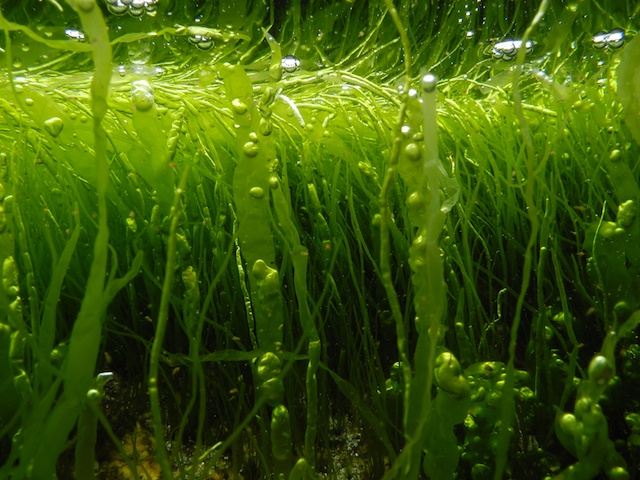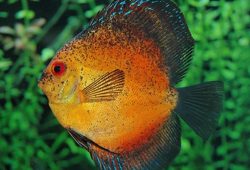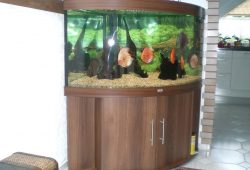Got a Marine Algae Problem?
The article concerns the following question – Got a Marine Algae Problem?

Contents
Four Species of Blennies that Will Remove Algae
There are too many blennies to cover in a single article, so this article will focus only on blennies that are good at fighting nuisance algae in your saltwater aquarium. Other blennies will be dealt with in separate articles. Within the suborder Blennioidei, there are four commonly available blennies that love nuisance algae. They are:
- Lawnmower Blenny (Salarias fasciatus)
- Segmented Sailfin Blenny (Salarias segmentatus)
- Starry Blenny (Salarias ramosus)
- Black Sailfin Blenny (Atrosalarias fuscus)
All three of these blennies are under $20, are appropriate for beginners and make wonderful aquarium inhabitants with few downsides. They are all under six inches in length, and all can be kept in an aquarium as small as 24 gallons.
The Lawnmower
The poster child for algae eating blennies is the appropriately named Lawnmower Blenny, and a brief discussion of this species will suffice for all. Sometimes called Algae Blennies, Sailfin Blennies, Jeweled Blennies, or Jeweled Rockskippers, this fish rarely exceeds five and one half inches in length and loves filamentous algae. While filamentous algae is the food of choice, the Lawnmower Blenny will also eat red (Rhodohphyte) and brown (Phaeophyte) algae. Do not expect them to eat bubble algae or Blue Green Algae.
Habitat
A shallow water, tropical reef fish, in the wild the Lawnmower Blenny lives on Indo-Pacific reef flats and in shallow lagoons and estuaries, although they may also be found on seaward reefs. In the aquarium, they will stake out their algae patch and defend it against other algae eating animals (even much larger tangs). In general, all four of these blennies are reef-compatible, although they may nip at the mantles of clams and occasionally at the polyps of stony corals. Although some people complain of lawnmower blennies becoming pugnacious and lazy, most aquarists find them to be personable, peaceful algae-eaters that will provide years of enjoyment and utility.
In General
The other three blennies are pretty similar in terms of their habits, and all will effectively target nuisance algae in the saltwater aquarium. All four should be kept singly unless a mated pair can be obtained for a very large aquarium. Chances are you will see very little aggression from any of these fishes unless they are confronted with a member of their own species or a species that is very similar to themselves in terms of color, shape and general behavior.
Don’t Let Them Starve!
All four of these blennies can starve if the tank is not well enough established and lacks sufficient algae. It is wise to feed nori strips to these blennies as a way to supplement their diet in a tank lacking enough algae. Like the vast majority of herbivorous marine fishes, blennies can be omnivores and may feed on small planktonic food. For one of these blennies to be truly happy and relatively self sufficient, keep only one per 75 gallons with at least as much live rock.



